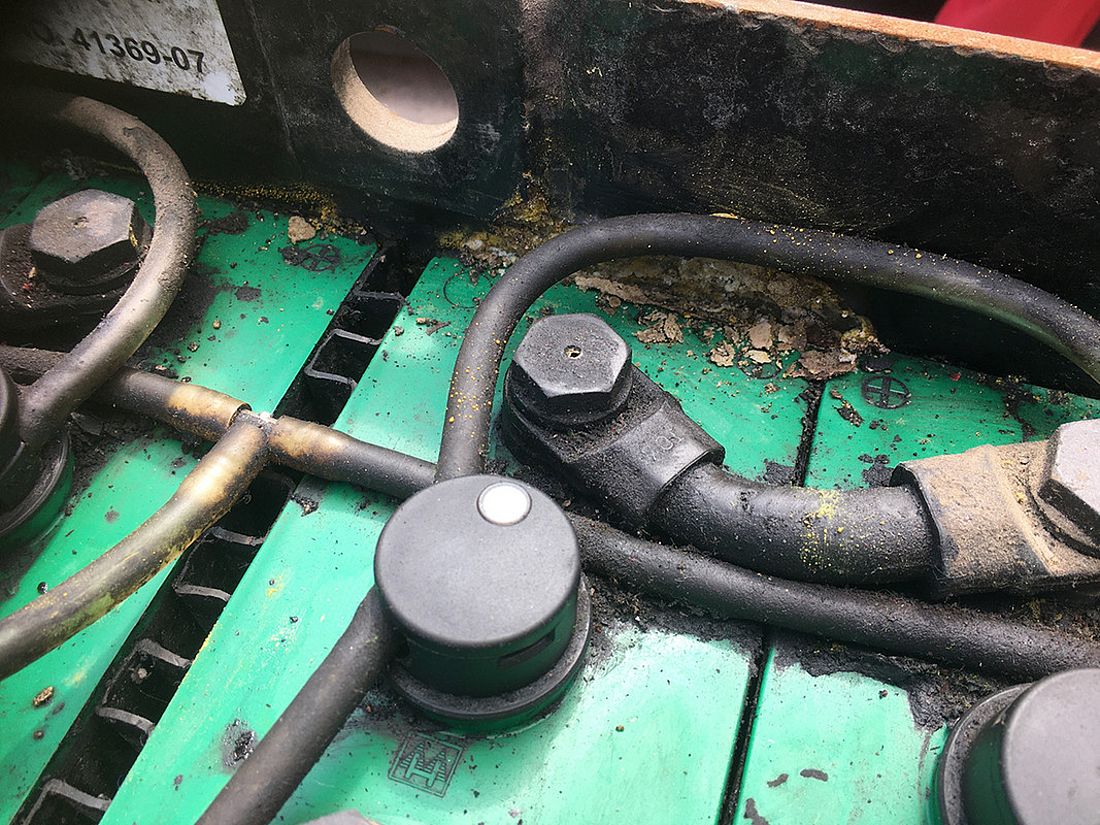With over 90 per cent of a typical logistics fleet being electric powered, today’s warehouses and distribution centres are more dependent than ever on the battery.
With lead-acid, wet chemistry a lot can go wrong when batteries sit idle for weeks. So how can you prevent battery failure damaging your business?
Save money through understanding
Understanding your motive power battery can save you a lot of money. A battery is essentially a device that stores chemical energy and releases this energy in the form of DC electricity. This is a process that happens through the process of charging and discharging.
How long will the energy last?
Whilst the available energy (known as Kilowatt hours KWh) in a battery is dependent on the size and numbers of plates it contains within its cells, working conditions will have a big impact on its efficiency and length of life.
Balance matters
It’s important to remember that the energy from the box inside a lead-acid battery is derived from a chemical reaction. Lead, lead dioxide and diluted sulfuric acid react together energetically to produce lead sulphate and water.
However, the full potential of the energy locked up in this reaction will only be released if different elements of the reaction are kept in balance. If the balance of lead sulphate builds up or acid is concentrated in some areas, the battery’s ability to provide power will be compromised.
The main causes of battery failure
In our 90 years of experience working with the sensitive electrochemistry that is the battery, we can narrow all battery failure down to five causes:
1. Poor quality product
Not all batteries are built equally. Whilst an average cycle life of a decent industrial battery is 1500 cycles, higher quality products offer 1700 cycles. This is a 13 per cent increase which could mean seven years of service life instead of five. Conversely, low quality products with poor build and components will have a significantly reduced service life. Despite their lower initial cost, this is a false saving.
2. Inappropriate charging procedures
Overcharging pushes active material mass out of the positive plates in the battery and leaves deposits on the negative plates. This leads to high self-discharge and loss of energy.
3. Poor maintenance
Lead-acid batteries derive their power producing capabilities through live chemistry. Hence, they need regular maintenance to keep them running well. One common and often overlooked aspect is topping. Lead-acid batteries use up water during the chemical process. This water must be replaced, filling the individual cells to the appropriate level and at the correct time to provide an efficient mix of chemicals and electrolytes. Battery damage is inevitable if the water level drops too low or is overfilled.
4. Over discharging
This is when the battery is used beyond 80% depth of discharge. It causes excessive amounts of heat and destroys the active material in the cells as well as potential reversal of polarity. This limits electrolyte flow and charge voltage. It will ultimately destroy the battery.
5. Energy throughput problems
Heavy and prolonged operational use will adversely affect batteries. The battery is designed to deliver its 80% capacity once within a 24-hour period. If more amps than the battery is designed for are used in the operation, then the expected cycle life will be reduced.
Post Covid battery care
After standing down during inactive periods, an active system like a battery will undergo changes that affect its performance. For example, the sulphuric acid used in lead-acid batteries will be more prone to oxidising when static, and this means that sulphate deposits will collect on the plates, thereby reducing capacity. In addition, without use or circulation, stratification will occur as the acid and water separate and settle at different levels. Essentially the effective use of the battery shrinks.
Ten Commandments of Battery Care
Here are our 10 commandments of battery care to help you keep your batteries in top condition:
- Place the battery into service and complete a full discharge and charge cycle
- Never discharge a battery beyond 80% depth of discharge (DOD). And do not operate the battery if its specific gravity is below 1.150sg
- If above 45oC, allow the battery to cool before charging or operating
- Keep battery top clean, dry and vent caps tightly in place
- Ensure your FLT supplier calibrates, and if necessary, adjusts truck lift interrupt (BDI) to achieve correct lift cut out at 80% discharge
- Use only approved and matched chargers to charge batteries
- Keep battery cover or truck compartment open and well-ventilated during charge
- Top up the battery electrolyte levels only after it has been fully charged by using deionised or distilled water
- Ensure your charger offers automatic equalisation or refreshing charge. If it doesn’t, make sure you undertake this on a weekly basis.
- Ensure you have a customised maintenance schedule in place that includes daily, weekly, monthly, quarterly and annual tasks. This should include visual inspections, cleaning, equalising charge, general inspection and measurement.
Remember that battery care requires specialist skills when it comes to industrial fleets. Can you afford to get it wrong? Talk to us today on 01782 667305 or sales@hoppecke.co.uk.
